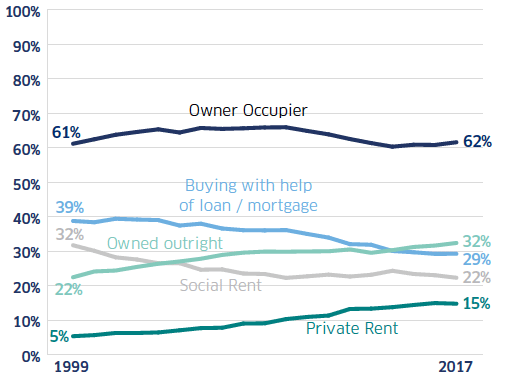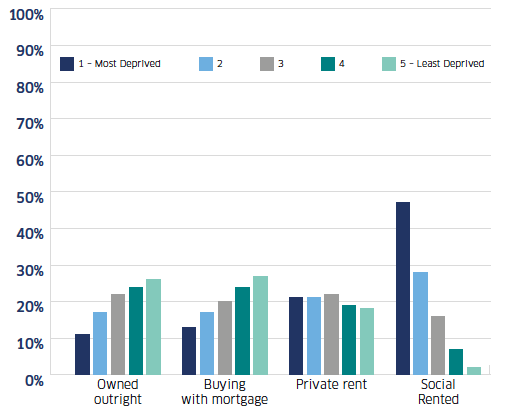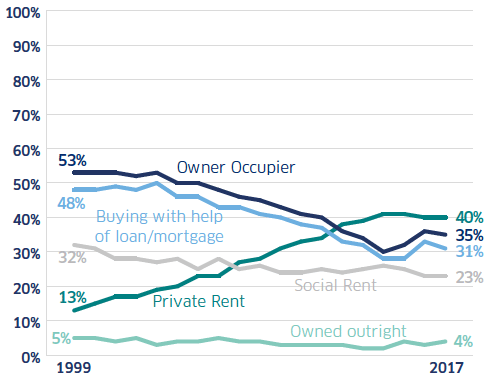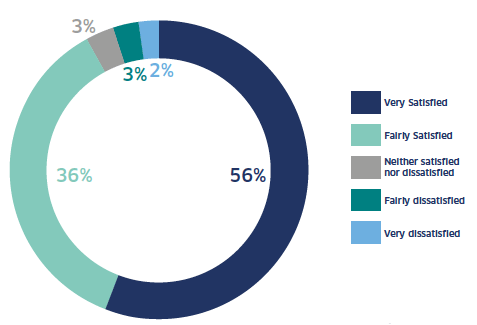Scottish household survey 2017: key findings
This short report summarises the key findings from the Scottish Household Survey 2017.
Housing
Tenure over time
The private rented sector grew steadily from 5% in 1999 to 15% in 2016, although the proportion has remained similar at 15% in the latest year 2017.
The social rented sector declined from 32% in 1999 to 23% in 2007, and has remained around this level since then.
Whilst the proportion of owner occupied homes in 2017 is at a similar level to 1999, there has been an increase in those owning outright and a decrease in those buying with a mortgage throughout this time period.

Deprivation
In 2017, half of owner occupier properties (owned outright and buying with a mortgage) are located in the 40% least deprived areas of Scotland, whilst only 12% are in the 20% most deprived areas. Private rented properties are located fairly evenly across deprivation areas.
For social rented properties, three-quarters (75%) are located in the 40% most deprived areas, with only 2% in the 20% least deprived areas of Scotland.
Tenure by area deprivation

Households where the HIH was aged 16-34
During 2017, the proportion of households with a highest income householder aged between 16 and 34 years living in the private rented sector increased substantially from 13% in 1999 to 41% in 2015, but has remained at a similar level of around 40% since then.
Tenure of households with highest income householder ( HIH) aged 16-34

Satisfaction with housing
In 2017, over nine in ten households (92%) reported that they were very or fairly satisfied with their housing, with 56% being very satisfied and 36% being fairly satisfied.

Contact
Email: Emma McCallum
There is a problem
Thanks for your feedback